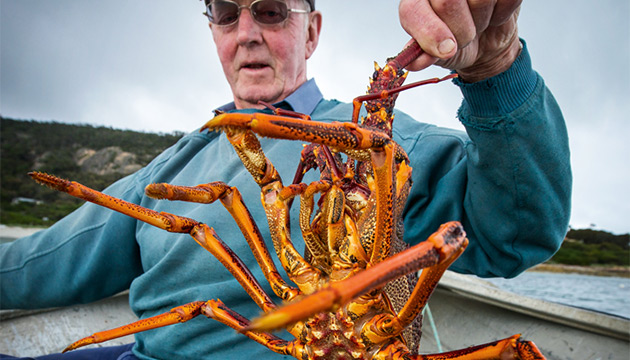Jack Wheatley is the only remaining solo cray fisher on Tasmania’s Flinders Island.
Story By Cormac Hanrahan
It’s low tide at Killiecrankie, a tightly curving bay on the west coast of Flinders Island, Tas, as Jack Wheatley steps deftly off the rocks and into a small aluminium tinnie crowded with crayfish pots. In a puff of two-stroke smoke the tinnie’s engine takes him out through The Narrows, a deep channel between rocky outcrops, and into open water. The wind is up this morning and the sea a field of watery bumps and lumps that slap against the hull. When he’s reached a chosen spot, Jack slips the engine into neutral, grips a wooden craypot about the size of a car tyre, steadies himself in the bobbing boat, and heaves it over the side, careful not to let the float line drift into the path of the propeller, before moving on to the next spot. At 73 years of age, Jack, whose father, grandfather and great-grandfather were all fishermen before him, has been ‘shooting’ pots longer than anyone on the island.
“My father taught me, I presume, but actually also we’re self-taught sort of thing, done it in the row boats when we were kids, gone out through The Narrows just like we did now to pull the pots on the dinghy, then go to school at half past seven,” Jack says. “It was good fun rowing the dinghies out; my brothers and I used to race across the bay, each in a boat of his own.” Jack reminisces as he throttles back again and tosses the last of the pots overboard.
Such recollections, however, are not mere nostalgic dwellings on a time long past for apart from a few more houses on the hillside, Killiecrankie – like the rest of Flinders Island – remains much as it was back when Jack was a kid. “It’s paradise I reckon, just love it, love doing it,” he says as he heads to the sheltered waters of the bay. “Pull the pots, bait them up, throw ’em back in and move somewhere else.” The main difference now is the number of boats working the waters.
This Story is from Issue #102
Outback Magazine: Aug/Sept 2015










